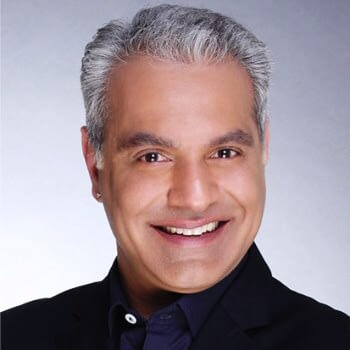
Big data, Analytics and Artificial Intelligence have great potential to have a huge transformative impact in the public sector. Governments have access to tremendous amounts of data and their operations affect everyone in small and big ways every day.
As Malaysia accelerates its digitalisation efforts through its MyDigital strategy, data will only become a more precious commodity. Having a robust data and AI strategy in place will help the public sector better harness the power of data.
It is no secret that rich data catalyses AI and that the government has the most and best data. Yet, AI adoption among government entities appears to be uneven and generally lags behind the private sector. Albeit, for some, there are entire departments or pockets within departments, where adoption is robust, advanced and successful.
Public sector agencies struggle to unlock the value of their data due to outdated legacy systems and limited analytics capabilities – being data-rich but insight-poor. Public sector agencies require a multifaceted approach, including the ability to quickly integrate new data, make accurate, multilevel forecasts and provide data-driven insights for policymakers.
With big data catching on, Malaysia is heavily invested in accelerating Big Data Analytics (BDA) adoption and innovation within the country. BDA is central to Malaysia’s digital economy, resulting in the growth of other digital technologies, such as AI, IoT and advanced automation.
The government is pushing for Malaysia to become a BDA hub in ASEAN and has taken initiatives for Big Data Innovation Centres of Excellence. Malaysia is one of the very few countries in the world with a structured national Big Data Analytics initiative.
The National Big Data Analytics Centre (NBDAC) has been established to support the Government’s aspirations in ensuring every planning and decision-making is based on data analytics and in line with the Digital Government and the Fourth Industrial Revolution (4IR) initiatives.
Today’s unprecedented speed of technological change has shifted people’s expectations of public services. Citizens are demanding high-speed, efficient and readily accessible service on their terms. MyDigital outlines the objective of achieving 80% end-to-end online government services. To achieve this, the government has been fast-tracking its digitalisation goals.
Governments are expected to modernise and streamline the way citizens access public services. BDA endeavours to tap on innovative technologies, creating personalised services and laying the right foundation will be key.
The time has come for agencies to leverage 5G to transform public services, elevate citizen experience and accelerate productivity. Government agencies are looking seek to deliver quality services in increasingly dynamic and complex environments. However, outdated infrastructure and a shortage of systems that collect and use massive real-time data, make it challenging for the agencies to fulfil their mission.
Governments have a tremendous opportunity and responsibility to transform public services using the Artificial Intelligence of Things (AIoT) to provide situations specific and real-time data, which can improve decision-making and optimise operational effectiveness.
5G networks will play a huge role and help in delivering AIoT effectively and efficiently in shaping the future of digital Malaysia.
AIoT and IoT Analytics can help gain real-time situational awareness that enables enhanced emergency preparedness, swift response and proactive communications designed to reduce devastating impacts on citizens and property.
The government, through MyDIGITAL, is shifting towards a Cloud-First strategy, targeting the migration of 80% of public data to a hybrid cloud system by the end of 2022.
The shift towards a Cloud-First strategy by the government is a welcomed and timely move. There is a broad range of advantages and efficacies linked to the shifting of public sector services into the Cloud.
Thanks to its ability to handle large volumes of information, Cloud services will enhance the efficiency of data collection and management as well as enable advanced technologies to be used to strengthen the delivery of government services to all Malaysians.
This points to several questions
- What are the biggest untapped opportunities for big data analytics and AI adoption in government?
- What obstacles and challenges unique to the government are most important to understand today to ensure progress tomorrow?
- How can agencies harness the power of 5G technology and deliver innovative IoT, AI, and ML capabilities?
The OpenGovLive! Virtual Breakfast Insight on 25 March 2022 is aimed at imparting knowledge on how government agencies can accelerate, innovate and transform their advanced analytics capabilities into the cloud, make data an integral part of their decision making, harness 5G technologies and adopt AIoT to better serve the citizens.
Harnessing insights to deliver better citizen experience

Kicking off the session, Mohit acknowledges that MyDigital is a vital vision document and government mandate. However, in practice, organisations must understand it, digest it and break it down into milestones.
When the government would like to deliver their mandates, the implementation does not happen right away because people might not know how to deliver them.
Hybrid cloud has become more prominent and data is always needed to generate insights and intelligence. The exigencies of responding to the pandemic have forced many organisations to turn to band-aid technology.
Now that the dust has settled, he urges organisations to take a deeper look at ways to fundamentally transform operations and leverage on insights. That includes transforming culture and people.
5G empowers organisations to acquire data in real-time, but without turning data into intelligence it is not useful. Organisations need to understand what is required during the transformation journey. Prediction requires more than just intelligence.
He believes that SAS has the expertise from helping governments all over the world become more effective in their delivery of public services.
Closing his address, he strongly recommends delegates look for specialists to partner with instead of doing everything on their own.
“Let the experts do what they do best,” Mohit says. “It not only allows the best systems and infrastructure to be put in place but also frees up the organisation’s staff to concentrate on the actual delivery of services!”
Digital transformation through AI

Speaking next, Nik Ariff Nik Omar, Director of Public Services, GLCs and Telco Sales, SAS Malaysia introduced the company as an organisation with a niche in data analytics and AI. SAS is highly rated for its vision and execution of data analytics.
SAS has strong testimonies from governments All over the world where AI has been deployed in various industries, ranging from health to education.
Citing ways in which SAS will be able to help, Nick highlights several areas for partnership.
- Big data analytics initiatives
- 5G commercialisation
- Investigation management
- Cloud modernisation
In closing, Nick asserts that there is an urgent need for governments to stay relevant and nimble in their ability to deliver citizen services and respond to crises. Insights generated by AI can help to free up resources within the government, which can be allocated to other areas of government service.
Capitalising AI adoption to transform public sector services
Dr Steve Bennett, Director, Global Government Practice, SAS, spoke about the different challenges and success in AI for government applications.
Dr Steve shares that the practice of using data to make better decisions was pioneered in government in WWII, giving rise to operations research, defined as “A scientific method of providing executive departments with a quantitative basis for decisions regarding the operations under their control”.

Today, using data to make better decisions may be identified as Artificial Intelligence, which supports better decisions by training systems to emulate specific human tasks through learning and automation.
Dr Steve observes that AI is an increasing priority for the government and the top trends include:
- Securing trust in public institutions
- Investigative missions
- Economic and revenue stability under uncertainty
- Integrated data for integrated decision making
- Workforce optimisation
He points out several opportunities where AI can make a real difference in the public sector. In public health and safety, AI has been used for disaster response in the Philippines to determine the areas that required disaster response. In Australia, the government is working with SAS to increase the investigative efficiency of the police force. Technologies that help to link cases through AI are helping them close cases faster.
It is also extensively used to reduce judicial case delays by determining the cases that should be assigned to which types of courts, which has allowed the judicial process to speed up. In Spain, SAS is working with the police to apply AI to case records to effectively assign protection for women.
In health, AI has been used to promote public health in India, improve cancer outcomes through better decision making in Amsterdam, keep the U.S. food supply safe and make COVID-19 outbreak predictions that result in targeted policy-making decisions.
In summary, Dr Steve reiterates that the complex problems of today herald a time of change. To stay relevant and efficient to citizens, government agencies need to understand the benefits and considerations of using technology and harness it accordingly.
Modernising the delivery of services through digital transformation

Mike Cunnington, Deputy Commissioner, Information and Intelligence Services, Inland Revenue, New Zealand spoke next on Inland Revenue, New Zealand’s experience of utilising AI in taxation and the administration of pensions system and fund disbursement.
The journey towards the adoption of AI began with the realisation that the legacy system was not sufficient. Mike observes that it was not simply the technology change but more fundamentally about how people work. Part of that process involved taking on the viewpoint of the customer and re-engineering what Inland Revenue does.
Inland Revenue New Zealand has modernised the way they deliver services through an end-to-end digital transformation involving our customers, people, processes, policy and technology. Some of the changes and benefits include:
- Growing voluntary compliance by making it easier for people to get it right
- Reducing compliance costs
- Making government policy changes more quickly and more cost-effectively
Accordingly, Mike shared some of the guiding principles that shaped their decision-making process.
- Core design principles that endured: simple, certain, open
- Build a data-enabled system. Simplify processes and policies so that people will utilise the service.
- Buy, do not build; and configure, do not customise
- Partner with the market and work within the constructs of those systems.
- Fit processes seamlessly into people’s lives, ideally utilising their systems of choice
- Capitalise on software that people are naturally using.
To be digital-enabled, organisations need to have data and know when to use it to generate insights that are then used for decision making, Mike opines. Accordingly, he shared what analytics may look like at the core.
- Consolidated data (deep and wide) on a single data platform supporting repeatable and accelerated analytical delivery with high re-use
- New data sources loaded into production within days not weeks. Commonly used data is refined and presented for rapid consumption. Data quality is centrally managed, reported on and actioned.
- Data empowerment through integrated analytical data and shared models accessible by the business to drive policy, strategy, and operational activities
- Rapid development of insights with rich base and analytical data where hypotheses can be discarded, further refined or promoted rapidly – where complexity is layered over time rather than ‘all-at-once’
- Courage to challenge the status quo, foster dialogue, and inquiry with the business around analytics (and where value resides in analytical effort) and iterate and change analytical practices for the better
For agencies to harness insights, Mike believes that they must change the way they work. It is critical if organisations want to move analytics from operational practice to a strategic tool that can inform policy and decision-making.
Some of the key insights from the use of AI from Inland Revenue’s experience are:
- Intelligence-led is a way of operating that sees IR making full use of the data and information it collects, holds, and distributes, along with the knowledge its people have and grow, to generate insights that drive the decisions that we make.
- Decisions are automated and scaled to enable personalised interactions and proactive risk-based interventions.
- Work flows to the appropriate available skilled people.
- Through improved understanding of the collective knowledge, paired with improved content and search capability, we can better aid customers to self-serve, and IR people to more effectively serve customers and government.
- The insights generated must be focussed on helping solve identified business problems or opportunities – deliver value quickly.
In closing, Mike believes that there are tremendous benefits to be yielded in the adoption of AI. The right application of AI can transform the way people interact with the government and vastly improve the experience of users.
Interactive Discussions
After the informative presentations, delegates participated in interactive discussions facilitated by polling questions. This activity is designed to provide live-audience interaction, promote engagement, hear real-life experiences, and facilitate discussions that impart professional learning and development for participants.
In the first poll, delegates were asked about the areas that have been allocated a budget in 2022. The majority (42%) have budgets allocated to the digitalisation of processes to deliver better or ‘Smart’ services. The remaining delegates have budgets allocation to data-driven initiatives such as Big Data/Data Lake (20%), enhancing or adopting AI and Analytics for improving outcomes through forecasting, prediction, and optimisation (15%), embracing Cloud technology, be it public or private (15%) and improving integrity and governance whilst reducing inefficiency (8%)
While some are focused on processes of digitalisation, other delegates shared that they are deploying their system on cloud to save resources. Another delegate revealed that his organisation is focused on data-driven initiatives because data is not centralised and often wrong.
Mohit opined that data is not necessarily inaccurate or incorrect because of people but because the data was wrong to begin with.
Dr Steve added that fraud is not always intentional but due to improper payment or benefits delivery – it could be a mistake or a wrong assignment. He shared that AI could help pick that up and ensure that benefits go to the right people in government service. He echoed Mike’s point that beyond the technology, there need to be processes in place that drive decision-making that can turn insights into practices in the operational pipeline.
Mike added that government rules are complicated, and data can help to simplify the rules by taking on the hard work.
Mohit said, from surveys done by OpenGov in the early days of the pandemic, Singapore was experiencing misappropriation/misallocation of funds not because of fraud but because data was wrong. That came to light only because AI was utilised in picking up information about households that were getting the wrong fund allocations.
The next poll inquired on the biggest challenge delegates faced in achieving the objectives stated in the first poll. A third (33%) felt hampered by the lack of skillsets and understanding of technology and the same number (33%) was hindered by the limited budget allocated that resulted in reducing prioritised requirements. About a quarter (26%) faced issues in data and governance constraints (e.g., data privacy, etc.), while the rest of the delegates were equally constrained by business and use-case definition and justification (4%) or were in the process of awaiting clear guidelines on the implementation (4%).
A delegate said the lack of skillsets and limitation of the budget were the main challenges he faced. People need to be upgraded at a fast pace. At the same time, acquiring more budget is a difficult process.
To that, Mohit acknowledged that innovation often takes a back seat due to tight budgets in many organisations. However, he points out that when AI is utilised to generate insights, organisations can find out where money can be saved.
For Mike, the process of convincing the organisation about AI adoption is not an easy one. He suggests the importance of demonstrating small successes that can be brought back to the organisation to build momentum.
Mohit added that it is important to change the way organisations work – it needs to be agile and in quick cycles. Apart from that, he strongly advised delegates not to build capacities in-house when they do not have the skillset internally.
From his experience, Mike champions partnerships because partners have systems that can be configured to the needs of organisations. One of the perks includes the upgrades that the partners will do on an annual basis and the continuous innovation that are incorporated into the software.
When asked about the minimum analytics capability that delegates would want to achieve in 2022, most (63%) want to be able to provide reporting, dashboards (Business Intelligence) for operations and management. The remaining delegates want to be able to forecast trends and patterns (25%), analyse and explore data to understand the current situation (4%), predict outcomes (e.g., flood, etc.) (4%) and optimise and improve outcomes (e.g., allocation of resources) (4%).
Dr Steve commented that the options reflect the journey that organisations take when adopting new processes of data analytics. It is an effective way to take stock of where organisations are at in that journey.
“It is a journey,” Mohit claims, and as organisations grow in knowledge and capability, people will become more confident in data analytics
In the final poll, delegates were asked about their criterion for considering advanced analytics as a success in their organisation. Over a third (39%) indicated that effective dashboard reporting for better, faster and cost-effective decision making is their criterion for success. Other delegates have different yardsticks – users can do analytics without IT’s help (31%), data accuracy and ability to drill up to every detail (17%), being able to get analytics reports promptly (9%) or real-time updates (4%)
Mohit believes that government should not build applications and instead partner with vendors who have the expertise and competencies to elevate government services.
Conclusion
Nick thanked everyone for the insightful discussion and presentation. He shared that the process of adopting AI is a journey and acknowledged the challenges that delegates face. He commented that when the maturity of an organisation is at an early stage, delegates could focus on starting small in the organisation to kick off the process of transformation.
As the proof of concept, when proposing Ai to their management, he suggests that delegates could leverage the many use cases articulated by Dr Steve. SAS’ success in helping Inland Revenue of New Zealand is a prime example of how AI adoption can vastly change processes and behaviour.
In closing, Nick emphasised the edge AI can offer organisations in their journey towards delivering better government services. He reiterated that the digital transformation is an ongoing and collaborative journey and encouraged the delegates to connect with him and the team to explore ways in which AI can help agencies improve their operations.
















